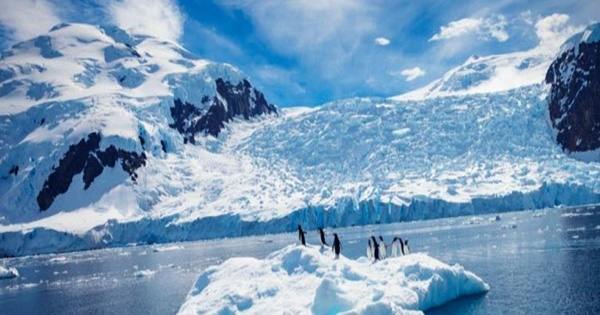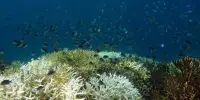Microplastics have been discovered in freshly deposited snow in the once-pristine region of Antarctica for the first time. Not only does this demonstrate how widespread pollution is in the natural world, but the authors of the current study also contend that the presence of plastic may be hastening the melting of snow and ice in the area. Scientists from the University of Canterbury in New Zealand tested new snow from 19 sites across Antarctica’s Ross Island region and discovered plastic particles in every sample, according to a study published in the journal The Cryosphere.
A liter of melted snow included roughly 29 microplastic particles on average, with PET, the plastic frequently used to produce drinks bottles and clothes, being the most abundant. “Finding microplastics in new Antarctic snow is really sad, but it demonstrates the breadth of plastic contamination into even the most distant places of the earth,” Alex Aves, main study author and PhD student at the University of Canterbury, said in a statement.
Microplastics had previously been discovered in Antarctic sea ice, but this is the first time they have been seen in fresh snowfall on the continent. Dr Laura Revell, research author and Associate Professor of Environmental Physics, stated, “Looking back today, I’m not at all shocked.” “We’ve learnt from research published in the last several years that we detect airborne microplastics everywhere we look.”
Previous research has shown that microplastics can travel thousands of kilometers through the air, which is likely how some of this microplastic arrived in the remote continent. However, the researchers believe that some of the microplastic found in Antarctica comes from tourists and researchers who visit the continent. The largest quantities of microplastics were observed near the research bases on Ross Island, which is noteworthy.
Microplastics in Antarctica might hasten the melting of the region’s ice and snow, which is a cause for concern. This is because darker flecks of microplastics may cause the snow and ice to darken, allowing more sunshine and heat to pass through. “Dark-colored microplastics are likely more efficient at collecting solar radiation than lighter hues,” according to the study. “They are of particular concern in the cryosphere because they may expedite melting.”
Concerns have also been raised concerning the impact of microplastics on the region’s animals. Previous research has showed that microplastics have been identified in the food of a variety of native penguin species, according to the study. While the health danger is yet unknown, a growing body of research is showing how microplastics, as well as harmful compounds like phthalates, bisphenol A, and others used in the manufacturing process, may accumulate along marine food chains.
According to several research, this has a variety of negative effects on fish and other aquatic life, including reduced food intake, delayed development, oxidative damage, and aberrant behavior. “How will microplastics affect species in the Ross Sea Marine Protected Area, the world’s biggest marine reserve? If we are to immediately act to limit the effects of microplastics on climate and the environment, we must first answer these concerns “Dr Holly Winton, a Victoria University of Wellington Research Fellow in Antarctic ice core climatology who was not involved in the current study, stated.















